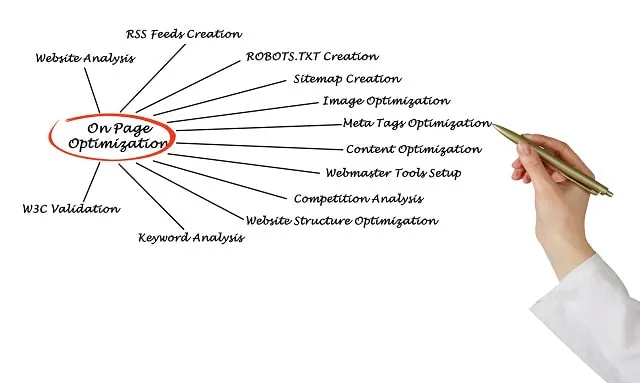The meta tag is one of the key elements of on-page SEO — or factors that help you optimize your website’s pages to rank better in search engines. Meta tags tell search engines important information about your website to know how to display your site in search results.
Several types of meta tags exist, and each one plays a different role in optimizing a website. The tags we’ll talk about in this beginner’s guide are some of the most important to know:
- Title tags
- Meta descriptions
- Meta robots
- Meta keywords
- Meta viewport
- Alternative text tags
- Canonical tags
Separately, these tags explain what a page is about, what keywords it’s targeting, whether it should show up in a search engine, and more. Together, they paint a detailed picture of your site, giving search engines specific instructions about what to do with it.
For SEO purposes, meta tags are a must. Without them, your site can confuse search engines and, in turn, prevent it from ranking as it should. In this guide, learn how to use meta tags to your advantage as part of your SEO strategy.
How to Use Meta Tags for SEO
The following meta tags are some of the most crucial to know and use as you build and grow a website that ranks in Google and other search engines.
Title Tags
Title tags tell search engines what webpage title to show in search results. While your page title might be something different on your website, the title tag can display a keyword-friendly, engaging title that can entice people to click your link when viewing results.
Title tags should be descriptive but fit within the 50-60 character suggested limit to avoid cutting off pieces in search results. They should also match the search intent of the searcher by being highly relevant to the keywords you target.
Meta Descriptions
While the title tag gives a quick glimpse of a page’s content to catch attention, the meta description offers more details for searchers. This description helps searchers decide if the content on the page is what they’re looking for, so it could lead to more clicks.
However, it’s important to note that the meta description does not directly influence a page’s ranking. Still, the clicks your link receives from a well-planned, detailed description can influence the page’s ranking. Plus, Google sometimes pulls information from the meta description to form its highlighted snippets that show in search results, which could also lead to more clicks for you.
Meta Robots
Meta robot tags let search engines know whether they should display your page or not. For instance, you may want a company profile page on your site but not want it to show up in Google’s search results. In that case, you’d add this meta tag to your <head> tag to prevent search engine crawlers from indexing that page.
You can also use meta robot tags in links to tell search engines to follow or not follow that link. This is helpful when you link to several sources from your webpage and want them to get the traffic that comes with those links without penalizing you on Google.
Meta Keywords
Meta keywords tags let search engines know what a page is about. While they’re not as important as they once were to Google rankings due to faulty SEO practices, they still play a role. These keywords can inform search engines of your content when you pay for search ads, and they may also still assist your rankings in search engines other than Google.
Meta Viewport
Meta viewport tags help browsers decide how to display the information on your website across various devices and screen sizes. The tags create more mobile-friendly sites that display and navigate well on phones, tablets, and laptops. A standard meta viewport tag makes it easy to add this tag to all website pages, but some websites may require custom tags to display properly.
Alternative Text Tags
Alternative text tags, also known as alt tags, are reserved for images. These tags tell search engines what an image shows, allowing it to show up in image searches. Alt tags should be informative descriptions of what’s in the image between 50-55 characters.
Canonical Tags
Canonical tags tell search engines which webpage to focus on if there are duplicates of that page. For instance, some publications use canonical tags to indicate which article is the primary article once it’s syndicated across other websites. These tags can also prioritize a webpage that’s similar in structure and content to another webpage.
Need more SEO help? Get more exposure for your content – and your brand – by installing ShareThis’ social media share buttons on your blog or website. They’re simple to install in just minutes and totally free to use. And because they allow your visitors to share your carefully crafted content with their networks with a single click, it’s an effortless way to grow your audience.






